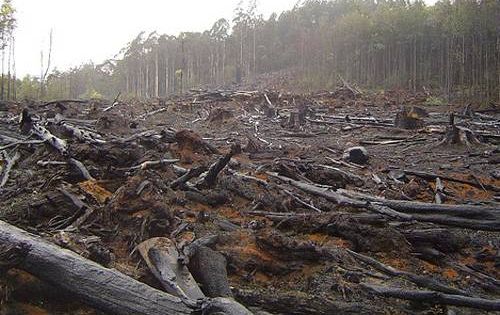Colombia has seen an alarming surge in deforestation since the peace deal with the terrorist organization FARC (Revolutionary Armed Forces of Colombia) was signed in 2016.
The amount of deforestation in the country jumped 44% in 2016 to 178,597 hectares (690 square miles) compared to 2015 according to official figures released this month – and most of the destruction was in remote rainforest areas once controlled by the FARC guerrillas.
The guerrillas placed severe limits on the amount of logging that was allowed in areas under their control. It was mainly a self-serving move as the heavy forest protected and shielded the guerrillas from air attacks by the Colombian Air Force.
But last year, as the FARC began to move toward demobilization, criminal groups moved in, taking advantage of the vacuum left behind to promote illegal logging and mining and cattle ranching. Civilians who had been ordered by the FARC to maintain 20% of their land with forest cover began expanding their farms.
“The FARC would limit logging to two hectares a year in the municipality,” said Jaime Pacheco, mayor of the town of Uribe, in eastern Meta province. “In one week [last year], 100 hectares were cleared and there is little we can do about it.”
Over their 53-year existence, the FARC were far from environmental angels. While in some areas the guerrilla presence helped maintain the forests, in others the rebels promoted clear-cuts to make way for the planning of coca, the raw material used in cocaine, or illegal gold mining, both a source of income for the group.
Bombings of oil pipelines dumped millions of gallons of oil in waterways and jungles. Between 1991 and 2013, 58% of the deforestation in Colombia was seen in conflict areas, according to a 2016 report by Colombia’s planning ministry.
“They weren’t environmentalists but they did regulate activity, and – since they had the guns – people complied,” says Susana Muhamad, an environmental activist who conducted a diagnostic study of the environmental risks of the rebel retreat.
“We told the government that it would need to establish control in these areas quickly, but it hasn’t,” she said. “It’s like the wild west now, a land rush.”
Colombia, which has the world’s eighth-largest forest cover, committed under the Paris climate accords to reaching zero net deforestation by 2020 and halting the loss of all natural forest by 2030.
Norway is donating about $3.5m over two years to a pilot project that hopes to stem deforestation by offering paid jobs to former FARC fighters and communities to safeguard forests by tracking and reporting illegal logging, adopting sustainable farming methods and undertaking eco-tourism projects.
“We hope this project can be the way for more activities whereby peace comes with green dividends,” said Vidar Helgesen, Norway’s environment minister, on a recent visit to Colombia.
That is the kind of incentive farmers in the town of Uribe, once a FARC stronghold, say they need to keep the forest on their land intact. “We are willing to leave the forests if we get some sort of subsidy to do it,” one farmer, Noel Segura, said in a phone interview.
With the civil war now a thing of the past, logging companies are rushing to claim areas once held by the FARC and some citizens are worried that the area will suffer irreparable damage.
To read the entire article from The Guardian, click here:
Photo courtesy Colombia Edu.
